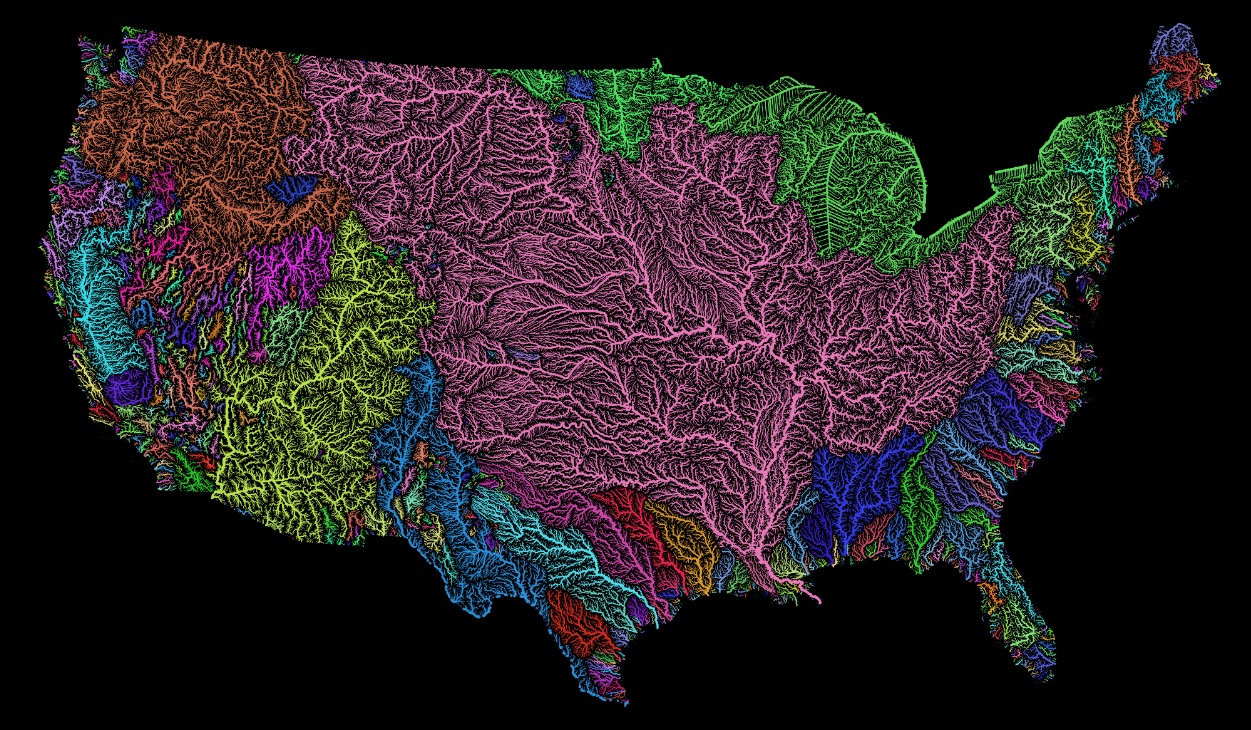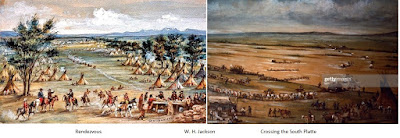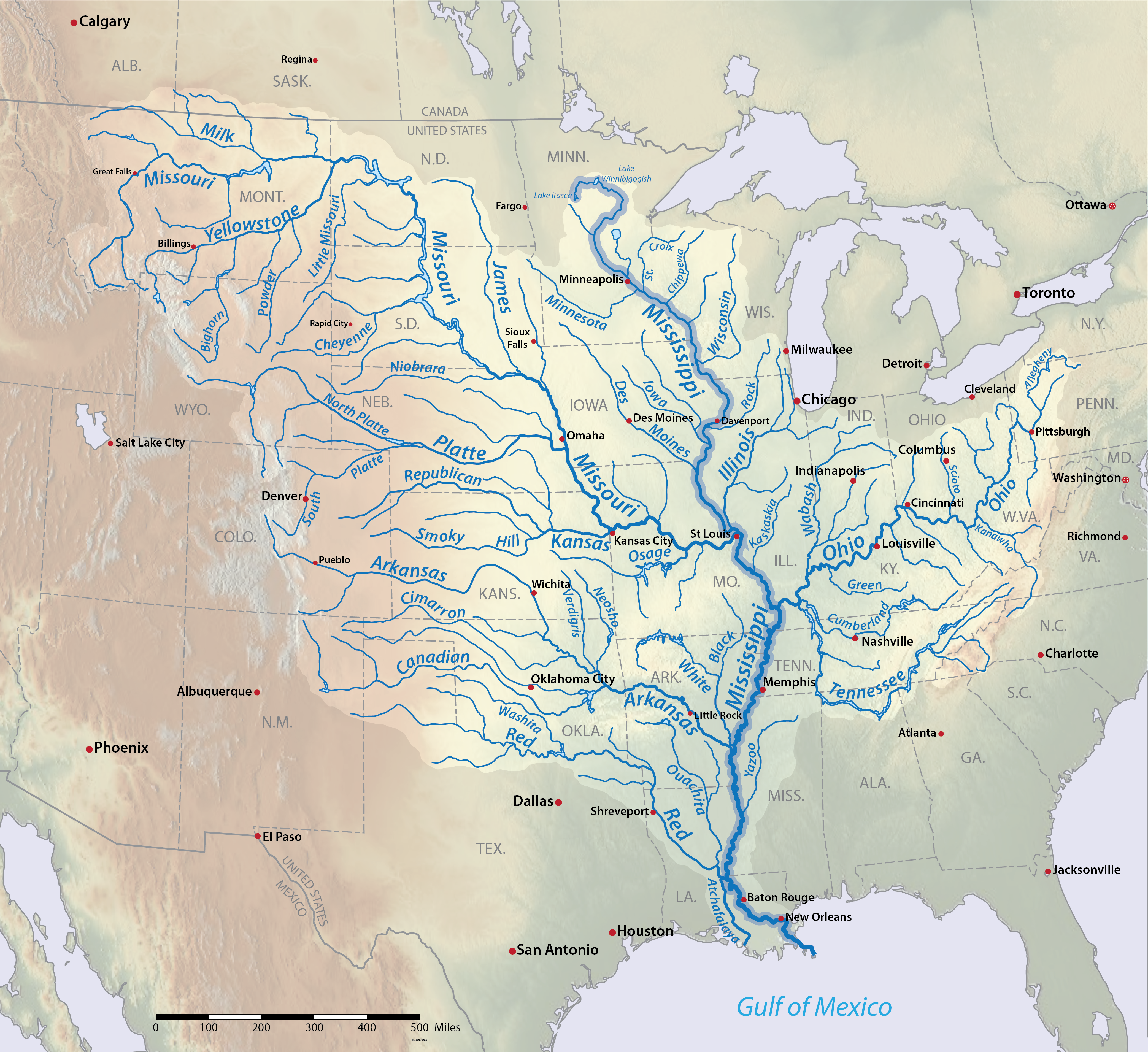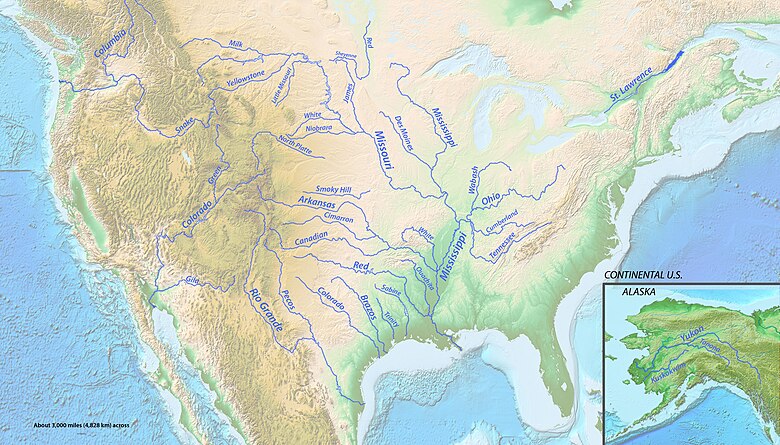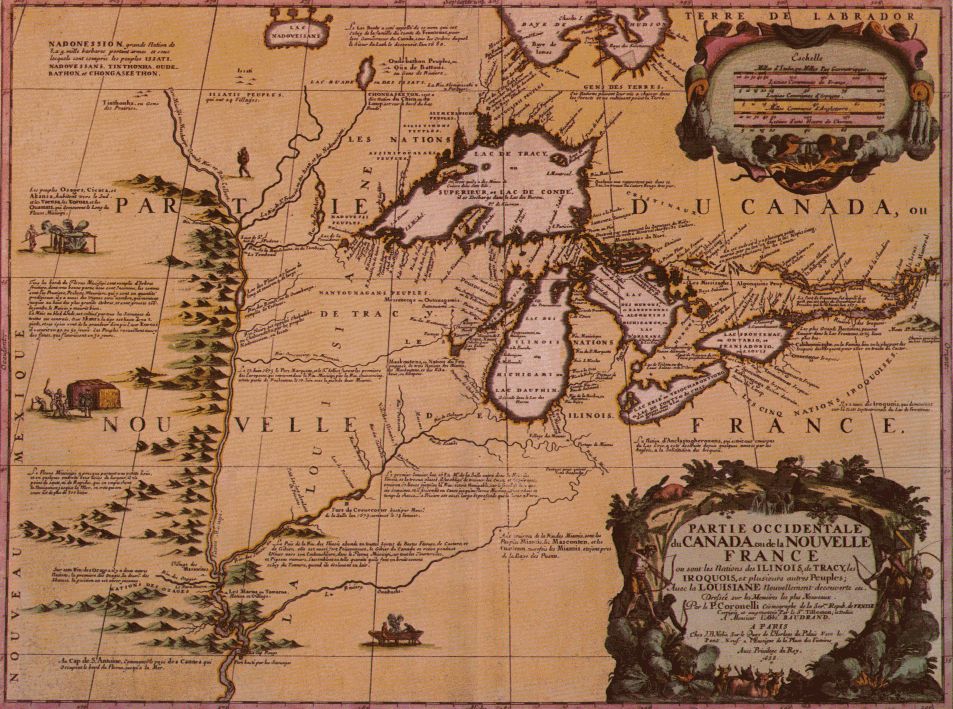TL;DR -- With a portage of a mere two plus miles, a route was shown from the Great Lakes (ultimately the Atlantic to the east) to New Orleans. Example of the importance of waterways to both migration (barrier) and commerce (traffic way).
--
Going back before the Revolution is necessary if we are to have the proper view. So, we are approaching 250 years from the U.S. start and are past 400 from the Plymouth arrival. That gives us an additional 150 years to look at which will be four to six generations.
We have covered many topics about lots of areas of the country, especially looking at the theme of western expansion that started after the expedition of Lewis & Clark in 1804. Their venture from the east coast was along the normal route that we usually considered where people traveled from the east down the Ohio River to the Mississippi. Then, they could go south to several points or backtrack up the Mississippi to the Missouri River and then head west. At the area now that is Kansas City, they could go by foot or stay on the river up to Nebraska. If going by foot (of any of the animals involved), the goings were over one of the 3 Trails. If getting off the river in Nebraska, they headed west and met those on the Oregon Trail from Kansas. However, if one wanted to go further north, one could use the Missouri River to Montana.
For a timeframe, we have looked at the period after 1804. But, we knew that there was activity before then. Long before, it turns out. Our research had us looking at families that came west either from the north as described above or from the south where they followed Boone's route. That is, if they were heading for the middle part of the country. If they were going to the south, there were other routes. In particular, we were following a family that came west from North Carolina (part of the family from Virginia and parts north) to Tennessee. Then, there was movement across Tennessee to Missouri and then Texas and back to Arkansas. That is where we found that the History of Arkansas is as old as that of Massachusetts in terms of exploration. Just like Kansas was visited from the southwest (out of Taos) in the sixteenth century where Coronado was not far from the Gardner Junction area, De Soto came up the Mississippi to a point near southern Missouri. This was in the mid-sixteenth century (1541). So, that area already had its 400 and is not far from a 500.
A Spaniard made it up to where Missouri and Arkansas now meet a hundred years before the Mayflower. And, he saw the Arkansas River that has water from the Rockies, assuming that some water might have made the entire journey as there are sufficient rains for replacement plus lots of dry areas where the river disappears underground. A little later, travelers from New France came to the same area from the northeast.

This map has south to north oriented as left to right with the Gulf of Mexico on the left coast. It was Spanish territory. Whereas the travelers were French. The two didn't mix at the time. On this map, the Arkansas is the first river from the left heading up at an angle from the main line. The next one that is above the line (Mississippi River) is the Missouri River. Notice, the mappers blew right by the Ohio which goes all the way back to the western part of Pennsylvania. Proceeding on to the right, they show the Illinois branching off from the bottom of the line. Finally, the Wisconsin is shown toward the right.
The travelers came west via the Wisconsin River, went south, and then went back via the Illinois River where there was a portage needed to get to the Chicago area. Okay, that was nice to know that this looksee was one year (1673) before Thomas' death. Given the issues between England and France which bubbled out a little later, one wonders how much interchange there may have been between these two groups (New England and New France). Would any type of incidental exposure even have been documented?
We have to ask, have we been looking too much at New England? What's the modern concept, echo chamber? There's a reason to ask, as we find all of the time that some things are seen differently and that this difference can be seen in reports. One related to Oregon is still pending further study. Now, we can deal with events not seen earlier due to the lack of communication in the prior times. With the internet and digitization of data, we can actually do some matching up now that was not possible before. A big concern is provenance of the new data (see posts related to Margaret's parents, as an example).
The U.S. consisted of several pieces tied together. Joliet and Marquette (1673, see Reminiscent history of the Ozark Region, pp 16,17) are the names of the men who came out of Canada from the northern shore of Lake Huron where they had arrived via Lake Erie from the St. Lawrence area. We were just looking at the early phases of the French-Indian Wars from the side of New England, so we'll go back and consider the other side(s).
Anyway, going a little south along the western shore of Lake Michigan, J & M got to the Green Bay, WI area and picked up the Fox River. This is where it gets interesting, in that an earlier post looked at Gardner River in Wyoming which in Yellowstone. There, we find a little split where one flow goes to the Yellowstone River, then the Missouri River and then the Mississippi River. A little bit away (crow-fly measure), the Snake River starts and empties a watershed for water that heads west. Wyoming also has flows that go south to the Great Salt Lake or head east to the Platte River which eventually gets to the Missouri way past where the Yellowstone comes.
Crow-fly? We will look at that in a later post. On the other hand, near where the Fox River ends in WI in one location, it is a mere two, to three miles, from the Wisconsin River which is a tributary of the Mississippi River. The map shows the two rivers and has the area marked where they almost converge. The site is now Portage, WI.

This means that one could leave upper New York as did the party that left Massachusetts with Lawrence, KS as their destination in the 1854. After getting to New York and Lake Erie, they boated to the Chicago area through the Great Lakes (Cordley only mentions Lake Erie, but they would have gone through Lake Huron, as well, and then down Lake Michigan). Then, they got to the Illinois River which got them to St. Louis, MO; from there, they took the Missouri River to Kansas City and got themselves down to Overland Park. The party proceeded on foot to Lawrence by way of Gardner's Junction and founded the town and the University of Kansas. This was part of the Free State effort prior to the Civil War. Col. T. W. Higginson was out there a little earlier and but had to go overland through Iowa the rebels had the river closed down.
Now, we are putting this view of the Mississippi that showed it and its tributaries to be barriers as well as enablers to movement.
As we were researching, we ran across several articles and papers. This paper is from a college in Michigan and represents some of the type of research and reporting that the TGS, Inc. wants to support.
What's not to like, the paper mentions
MerryMount.
A further topic will be the
North American fur trade. Also, we will relook at the area where there is the split in the west (almost Idaho where there is a small separation between the starts of flow back to the Mississippi versus to one going west to the Columbia River. While we do that, we will look at the explorations of Yellowstone starting with the unofficial ones back in the time of
Jedediah Strong Smith, through the times of gold explorations, then looking at the official surveys which were later in the 1800s, and then consider the time of the designation of the area being a National Park.
Remarks: Modified: 02/27/2021
02/10/2021 -- Added links. Improved some of the verbiage. Brought in map drawn in Marquette's time.
02/13/2021 -- We will look at New France in more detail. About time.
02/16/2021 -- We mentioned the fur trade. Consider our post on the Gathering of the trappers which is a title taken from a W. H. Jackson painting. In particular, we look at General W. H. Ashley and his crew of trappers out of St. Louis, MO. W. H.? William Henry. Must have been popular (some message there/).
02/27/2021 -- Further on the western rivers (and the Missouri River). Put in the TL;DR line.


.png/1024px-Viceroyalty_of_the_New_Spain_1819_(without_Philippines).png)

